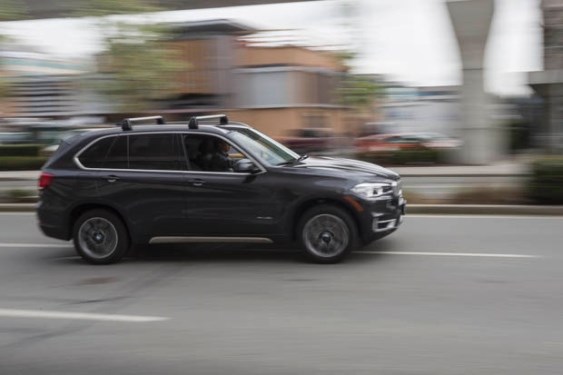At least one member of Richmond city council is willing to reduce Richmond’s default speed limit after a report from Provincial Health Officer Dr. Perry Kendall recommended doing just that, in order to save lives and reduce serious injuries from car accidents.
“Forty km/h is about right,” said Coun. Chak Au, after the Richmond News asked each individual councillor for comment on Kendall’s lengthy report.
“There is no single solution to the problem of (motor vehicle) fatalities. However, speed is the largest contributing factor to (motor vehicle) fatalities in B.C.
Dr. Kendall also points out that to reduce the default speed limit on roads is consistent with road-use best practices,” said Au, via email.
“I understand that his proposal is debatable, and has been rejected before,” noted Au.
Meanwhile, councillors Alexa Loo, Derek Dang, Bill McNulty and Linda McPhail stated they would not be willing to consider speed limits below 50 km/h along the city’s main (arterial) roads — at least not until Richmond RCMP provide more enforcement.
“There needs to be more consistent enforcement of speeding before looking at reducing speed limits,” said McPhail, who nevertheless said she wants the city’s transportation planners to look at expanding school zones, which are set at 30 km/h on school days.
“I’d be interested in seeing the school zone being made bigger. A lot of the time (the zone) is a hard transition,” said McPhail, who recently commented that average cruising speeds on main roads are well above 65 km/h.
According to City of Richmond spokesperson Kim Decker, Richmond typically sets school zones according to property lines in front of a school.
“There is no maximum or minimum distance; each jurisdiction is left to determine an appropriate distance for placement of the signs,” said Decker.
Schools along main roads do not have special speed zones, noted Decker.
McNulty said he would be willing to add more special 30 km/h zones. He said Granville Avenue, in front of the new Minoru Complex would be an ideal location, as many seniors will be crossing that street.
Adding more crosswalks (Richmond added or upgraded five last year through ICBC funding) and installing more signage and speed bumps are other tools available to the city for reducing speeding in specific areas.
Au also commented that he wants to see right turns banned on red lights at certain busy intersections to better protect pedestrians. On Tuesday, councillors asked Richmond RCMP Superintendent Rendall Nesset for thoughts on reducing speed limits.
Nesset opined that it wouldn’t be prudent on a main road.
“You have to be careful where to implement such a strategy,” said Nesset.
Coun. Carol Day said keeping speed limits at 50 km/h is important to keep traffic moving, an issue Nesset also raised.
According to the city’s transportation manager, Victor Wei, it’s possible for city council to set the city’s default speed limits below 50 km/h even if neighbouring cities do not.
He said “a lot” more signage would be required and a 30 km/h speed limit, as suggested by Kendall, could be an “enforcement headache.”
Wei said entrances to the city would need to notify drivers.
Wei also noted it is possible for council to reduce speed limits on local roads — those found primarily in between main (arterial) roads.
“Maybe the first step is just more enforcement,” said Loo, adding that putting up more signs wouldn’t be practical.
Last year, two pedestrians died after being hit by cars, although it’s unclear if speed was a factor.
Kendall cited RCMP data that noted speed is the number one contributing factor to fatalities.
He said 30 km/h is the “survivable speed for vulnerable road users, such as pedestrians and cyclists, and so speed limits of 30 km/h would be safest for local neighbourhood roads.”



